Discover PWA – What is Progressive Web App?
- Published on
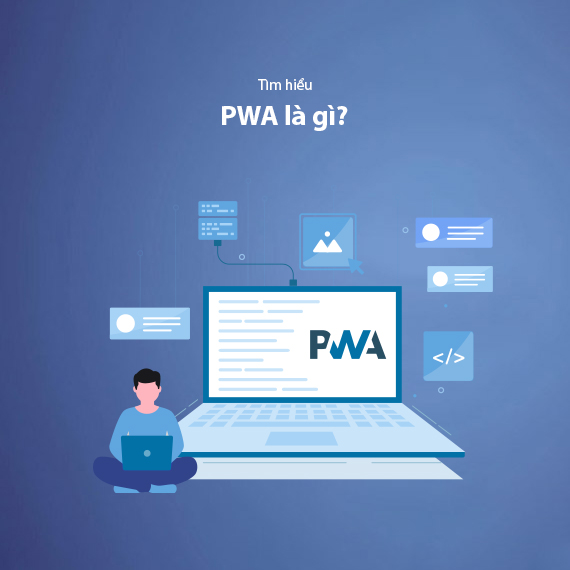
- What is PWA?
- The Benefits of Progressive Web Apps
- Saves space and bandwidth
- Smooth and fast user experience
- Cost savings in development
- Push Notification feature
- Comparison between Progressive Web Apps and Native Mobile Apps
- Accessibility and installation
- Development and maintenance costs
- User experience
- Offline functionality
- Updates and maintenance
- Overview comparison table
- Are PWA and Native Apps Competing Against Each Other?
- PWA Complements Native App
- When to Use PWA and Native App
- Disadvantages of Progressive Web Apps
- Limitations with Hardware Features
- Compatibility with Browsers
- Not Fully Supported on iOS
- Performance Can't Match Native Apps
- Applications of PWA in E-commerce
- Improving Page Load Speed and User Experience
- Push Notifications Feature
- Enhanced Accessibility
- Cost Savings in Development and Maintenance
- Offline Functionality
- Predictions for the Future of Progressive Web Apps
- PWA Will Be More Widely Supported on Platforms
- Improved Performance and Features
- Enhanced Interaction with Device Hardware
- PWA Applications in Various Industries
- The Growth of PWA Will Drive the Web Technology Industry
- Conclusion
What is PWA?
Progressive Web App (PWA) is a modern type of web application designed to provide an experience similar to that of a native mobile app, but can be accessed through a web browser. PWA uses advanced web technologies like Service Workers, Web App Manifests, and Push Notifications to enhance performance and interactivity of the website without the need to download from an app store (App Store or Google Play). One of the standout features of PWA is its ability to work offline, allowing users to continue using the app even without an internet connection.
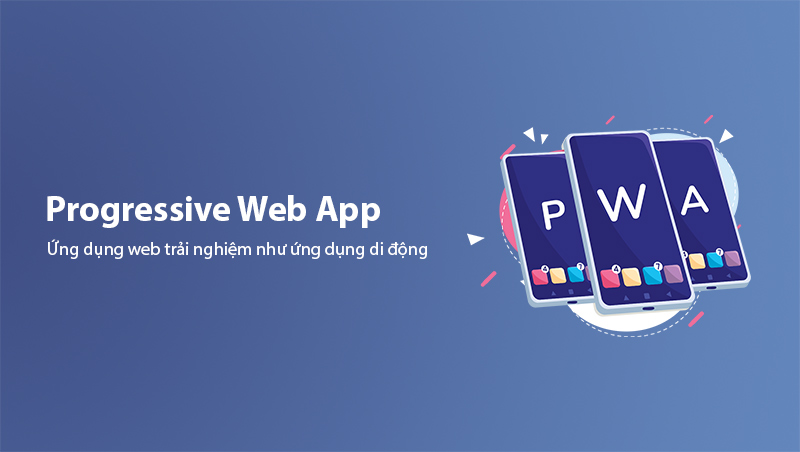
PWA was created with the goal of providing a smooth user experience, reducing the gap between web applications and traditional mobile apps. Google is one of the pioneers in developing and promoting the use of PWA, particularly in optimizing websites and improving SEO. If you are looking to optimize a website or develop a web app, PWA can be an ideal solution to meet users' needs across multiple platforms.
This article will provide an overview of PWA, compare PWA and native mobile apps, analyze the advantages and disadvantages of Progressive Web Apps, and explore PWA's applications in areas like E-commerce and predictions for the future of this technology.
PWA is not just a trend, but is becoming a long-term solution in web app development.
The Benefits of Progressive Web Apps
Progressive Web Apps (PWA) offer many significant benefits for both users and developers. Here are some of the notable strengths of PWA:
Saves space and bandwidth
PWA does not require users to download heavy mobile apps like traditional native apps. Instead, PWA only needs a few lightweight resources and downloads them through the internet connection when needed. This significantly saves memory space on the device while also minimizing unnecessary bandwidth usage when downloading or updating the app.
Smooth and fast user experience
With Service Workers that store resources and data on the user's device, PWA can operate even when there is no internet connection, providing users with a seamless and continuous experience. This is extremely important in situations where users need to continue using the app without worrying about losing connection.
Additionally, page load speed and performance of PWA outshine traditional websites, thanks to the ability to store resources and data locally on the device. This also helps boost SEO for websites using PWA as they load faster and are less affected by external factors.
Cost savings in development
Compared to developing a native mobile app for each platform (iOS, Android), developing a PWA saves a lot of cost. Developers only need to maintain a single codebase for all platforms instead of developing and updating apps for multiple operating systems. This helps reduce development time and maintenance costs.
PWA not only saves development costs but also optimizes the maintenance and updating process of the app.
Push Notification feature
One of the important features of PWA is the ability to send Push Notifications, allowing businesses to reach and interact with users even when they are not using the app. This helps improve engagement rates and revenue in marketing strategies, especially in areas like E-commerce or service applications.
Thanks to these benefits, PWA is becoming an increasingly attractive choice for businesses that want to develop apps that can quickly and effectively reach users without facing the barriers of native apps.
Comparison between Progressive Web Apps and Native Mobile Apps
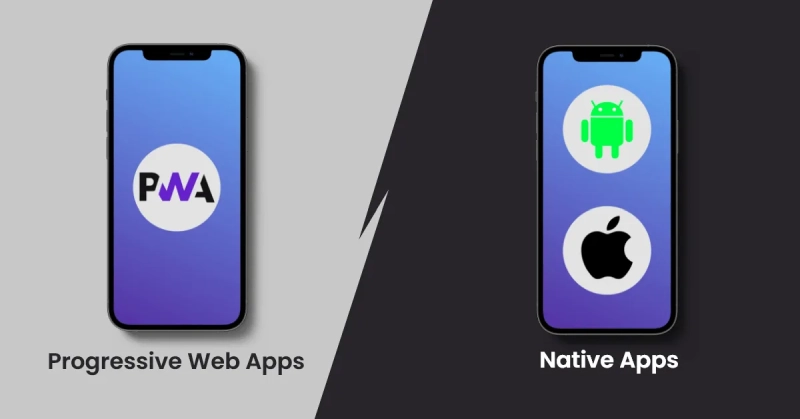
When comparing Progressive Web Apps (PWA) with Native Mobile Apps, there are several key differences that both users and developers need to consider. Here are some important factors to compare these two types of applications:
Accessibility and installation
- PWA: Users can access PWA directly from a browser without needing to download it from an app store (App Store or Google Play). After accessing it, PWA can be "installed" onto the phone's home screen like an app, making it easy for users to revisit without reopening the browser.
- Native Mobile App: To use a native mobile app, users must download and install the app from app stores. This creates a barrier for new users, as the installation process can take time and require significant storage space.
Development and maintenance costs
- PWA: PWA can run on all platforms without the need to develop separate apps for iOS, Android, or other operating systems. This helps reduce development and maintenance costs by maintaining a single codebase for all platforms.
- Native Mobile App: To develop a native mobile app, developers need to write separate code for each platform (iOS, Android). This not only takes more time but also increases development and maintenance costs.
User experience
-
PWA: Although PWA can work offline and provide a smooth user experience, there are still some performance limitations compared to native mobile apps. PWA cannot utilize all hardware features of the device like the camera, GPS, or sensors.
-
Native Mobile App: Native mobile apps can fully leverage the hardware and system features of the device, providing an optimal user experience with fast speed and full functionality. However, this requires more development time and adherence to app store guidelines.
Offline functionality
- PWA: One of the strengths of PWA is its ability to work offline thanks to Service Workers. This allows users to continue using the app even without an internet connection.
- Native Mobile App: Native mobile apps can also work offline, but with higher development costs and larger memory footprint. Additionally, offline features in native apps are often less flexible and scalable than in PWAs.
Updates and maintenance
-
PWA: Updating PWA is easy and fast. Changes can be made directly on the server and will automatically appear for users without needing to download or reinstall the app.
-
Native Mobile App: Updates for native mobile apps require users to download and install new versions from the app store, which can cause interruptions and affect user experience.
Overview comparison table
| Criteria | Progressive Web App (PWA) | Native Mobile App |
|---|---|---|
| Accessibility and installation | No need to download from app stores, can be installed directly from the browser. | Requires downloading and installation from app stores (App Store/Google Play). |
| Development and maintenance costs | Only needs to maintain a single codebase for all platforms. | Needs separate development for each operating system (iOS, Android), higher costs. |
| User experience | Smooth user experience but may not fully leverage device hardware features. | Can fully leverage device hardware features, providing an optimal experience. |
| Offline functionality | Works offline thanks to Service Workers, but may have some limitations. | Also supports offline functionality, but more costly to develop and maintain. |
| Updates and maintenance | Updates are easy and fast through the server without needing to download the app again. | Updates require users to download new versions from app stores. |
The choice between PWA and native apps depends on the specific needs of each project and development goals.
Thus, while PWA offers many advantages in terms of cost and accessibility, native mobile apps still have the upper hand in utilizing the full capabilities of the device and providing a premium user experience. Each type of application has its own advantages and disadvantages, and the choice between them will depend on the requirements and goals of each business or project.
Are PWA and Native Apps Competing Against Each Other?
Although Progressive Web Apps (PWA) and Native Mobile Apps have many differences, they are not necessarily in direct competition. Both types of applications have their own advantages and limitations, and the choice between them will depend on factors such as development goals, target audience, and budget.
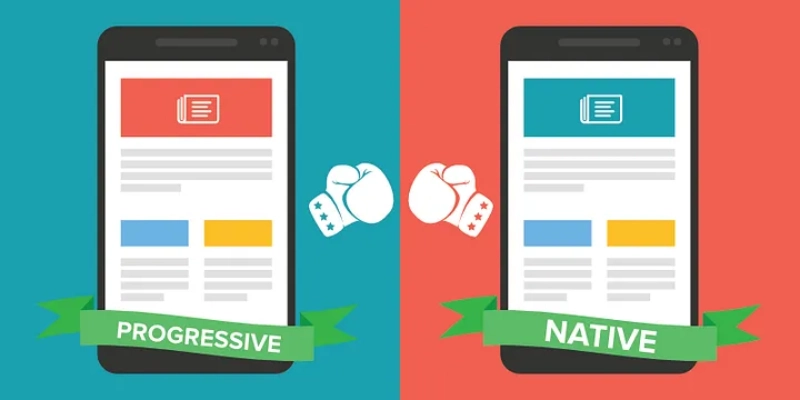
PWA Complements Native App
PWA does not necessarily have to completely replace Native Mobile Apps. Instead, they can complement each other. For example, a business might use PWA to reach a broad audience, including those who do not want or cannot download the app. Meanwhile, the Native App can be maintained for users who want an optimized experience, especially when accessing powerful device hardware features like sensors, cameras, or GPS.
When to Use PWA and Native App
- PWA is very useful in cases where a business wants to reach a wide user base without the cost of developing apps for each individual operating system. This is particularly useful for developing websites and E-commerce (E-commerce), where users can easily access the store from any device without encountering barriers related to app downloads.
- Native Mobile App has an advantage when a business requires advanced operating system features or deep hardware integration. Applications that need to use sensors, perform heavy graphics processing, or integrate with system services like NFC payments may find significant benefits from native apps.
PWA and Native App are not opposing choices but rather complement each other in a comprehensive app development strategy.
Thus, the decision between PWA and Native App depends not only on technical factors but also on the strategic goals of the business. PWA can help save costs and improve accessibility, while Native App still plays a crucial role in delivering a premium user experience and fully utilizing device hardware capabilities.
Disadvantages of Progressive Web Apps
While Progressive Web Apps (PWA) offer significant benefits, there are still some disadvantages and limitations to consider. Below are factors that may affect the choice of PWA for your project:
Limitations with Hardware Features
While PWA works well across many platforms, it still faces some limitations when interacting with the device's hardware. For example, PWA cannot fully access features like fingerprint sensors, barcode scanners, or other advanced hardware features that native mobile apps can utilize. This can impact the user experience, especially in applications that require these features.
Compatibility with Browsers
While most popular browsers today support PWA, not all of them fully support all features of Progressive Web App. This is particularly true for some older browsers or less common platforms. This can lead to compatibility issues and reduce accessibility for a certain segment of users.
Not Fully Supported on iOS
While iOS supports PWA to some extent, this platform still does not fully support all features that PWA requires. For example, Push Notifications on iOS only work when the PWA has been installed on the home screen, making this feature less flexible and effective compared to platforms like Android. This may impact a business's marketing strategy when trying to engage users through push notifications.
Performance Can't Match Native Apps
While PWA offers good performance thanks to local resource storage and offline capabilities, overall performance cannot compare to native apps. Native mobile apps can fully utilize system resources and optimize performance for heavy computing tasks or high-end graphics processing, which PWA cannot handle.
Despite its many advantages, PWA still has limitations that need to be considered when developing web or mobile applications.
These drawbacks do not mean that PWA is a poor choice, but rather that there are certain situations where native mobile apps are still a better choice. For applications that require integration with advanced hardware features or high performance, native apps have an advantage. However, for businesses and projects that require cost savings and broad user accessibility, PWA remains a strong option.
Applications of PWA in E-commerce
Progressive Web Apps (PWA) are increasingly becoming a popular choice for businesses in the E-commerce industry due to their ability to improve user experience and optimize development costs. Below are some reasons why PWA is well-suited for applications in the E-commerce sector:
Improving Page Load Speed and User Experience
In E-commerce, page load speed is extremely important. Studies have shown that every second of delay in page load time can reduce conversion rates and revenue. PWA helps solve this issue by quickly loading product pages, images, and information even when users don't have an internet connection, thanks to the local storage mechanism of Service Workers. This provides a smooth and seamless experience, which keeps customers engaged longer and increases conversion opportunities.
Push Notifications Feature
One of the powerful features of PWA in E-commerce is the ability to send Push Notifications. Through these notifications, stores can send information about promotions, discounts, or new products to users even when they are not using the app. This helps stay connected with customers and increases the chances of them returning to make purchases.
Enhanced Accessibility
With PWA, online stores can reach a large number of users without the barriers of app downloads from stores. Users can access the store from any browser without worrying about installing the app, which helps increase traffic and expand the potential market.
Cost Savings in Development and Maintenance
Developing PWA in the E-commerce sector saves a lot of cost compared to developing native mobile apps for each operating system (iOS, Android). Developers only need to maintain a single codebase for all platforms, rather than writing code for each platform separately. This helps reduce development, maintenance, and app update costs, saving resources for small and medium-sized businesses.
Offline Functionality
In situations where users have weak network connections or no internet, PWA can still continue to function, allowing users to browse products or add them to their cart. This helps increase customer retention and complete transactions when the user reconnects.
PWA helps businesses in the E-commerce industry maintain engagement with customers and optimize the online shopping experience.
Predictions for the Future of Progressive Web Apps
Progressive Web Apps (PWA) are rapidly evolving and have the potential to change how we interact with web and mobile applications in the future. With continuous technological improvements and strong support from developers and tech giants like Google, Microsoft, and Apple, PWA may become a leading trend in app development. Here are some predictions for the future of PWA:
PWA Will Be More Widely Supported on Platforms
Currently, although PWA is supported on many popular platforms and browsers, some features are still not fully supported on iOS. In the future, Apple may improve PWA support, optimizing features like Push Notifications and local storage. This will allow PWA to directly compete with native apps and increase flexibility for developers.
Improved Performance and Features
With the development of technologies like WebAssembly, the performance of PWA will continue to improve, approaching the capabilities of native mobile apps. This will allow PWA not only to meet basic user needs but also support more complex tasks like graphics processing or heavy computational tasks.
Enhanced Interaction with Device Hardware
One of the biggest limitations of PWA today is its ability to interact with device hardware. However, in the future, we can expect new APIs and advanced technologies to help PWA interact better with device hardware features, such as fingerprint sensors, barcode scanners, or even virtual reality (VR) and augmented reality (AR) functionalities.
PWA Applications in Various Industries
PWA has significant potential not only in E-commerce but also in other industries such as education, healthcare, and financial services. Businesses in these sectors can leverage the benefits of PWA to provide services to users quickly and efficiently, without requiring users to download apps.
The Growth of PWA Will Drive the Web Technology Industry
With the development of PWA, the web technology industry will continue to advance and change how we build web applications. Technologies like Service Workers, Web Push Notifications, and Web App Manifests will continue to be optimized and improved, offering more powerful tools for developers.
The future of PWA promises to bring significant changes, opening up many new opportunities for businesses and developers.
Conclusion
Progressive Web Apps (PWA) are changing the way web applications are developed and used, offering significant benefits for both users and businesses. With smooth operation, cost savings in development and maintenance, and easy accessibility across multiple platforms, PWA is becoming a top choice for businesses looking to optimize user experiences without the barriers of native apps.
However, PWA still has some drawbacks that need to be considered, particularly when faced with hardware integration or high-performance requirements. Nevertheless, technological advancements and strong supporting tools may address these limitations in the future, making PWA an optimal solution for many industries.
We hope this article has helped you better understand PWA, its advantages, disadvantages, and how to apply this technology in your projects. If you are looking for an optimized and cost-effective solution for web app development, PWA may be the ideal choice.
We encourage you to experiment with and apply PWA in your next project to optimize user experience and improve app performance.
With its strong potential and wide accessibility, PWA is sure to play a crucial role in the development of web apps and mobile apps in the near future.
Latest Posts

Lesson 26. How to Use break, continue, and return in Java | Learn Java Basics
A guide on how to use break, continue, and return statements in Java to control loops and program execution flow effectively.

Lesson 25. The do-while Loop in Java | Learn Basic Java
A detailed guide on the do-while loop in Java, including syntax, usage, examples, and comparison with the while loop.

Lesson 24. How to Convert Decimal to Binary in Java | Learn Basic Java
A guide on how to convert numbers from the decimal system to the binary system in Java using different methods, with illustrative examples.

Lesson 23. How to Use the While Loop in Java | Learn Java Basics
Learn how to use the while loop in Java with syntax, real-world examples, and practical applications in Java programming.
Related Posts
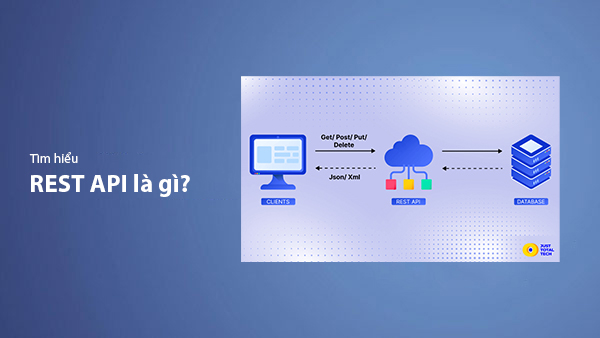
What is REST API? Complete A-Z Knowledge About REST API
REST API is one of the essential concepts that every backend developer needs to fully understand. This article provides comprehensive knowledge about REST API, including its definition, principles of operation, and how to build a standard RESTful API.
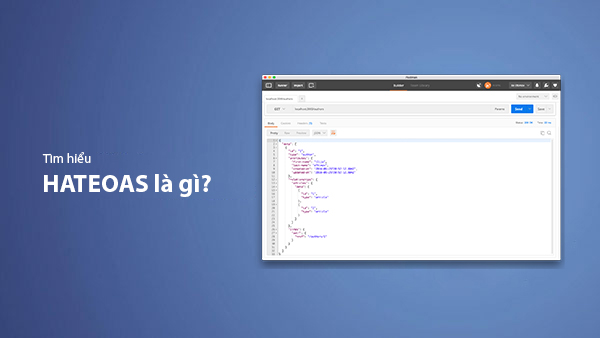
What is HATEOAS? How to Build APIs Using HATEOAS
Learn about HATEOAS, an important concept in API development, and how to build APIs using HATEOAS to improve interactivity and scalability.

What Is GraphQL? The Advantages of GraphQL Over REST API
Explore GraphQL, a modern API technology, and why it outperforms REST API in many web development scenarios.
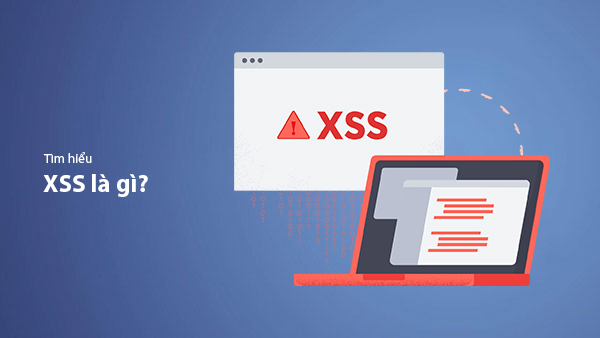
What is XSS? Signs of Detection and Effective Prevention Methods
Learn about XSS, signs of detection, and effective prevention methods for XSS attacks in websites.

